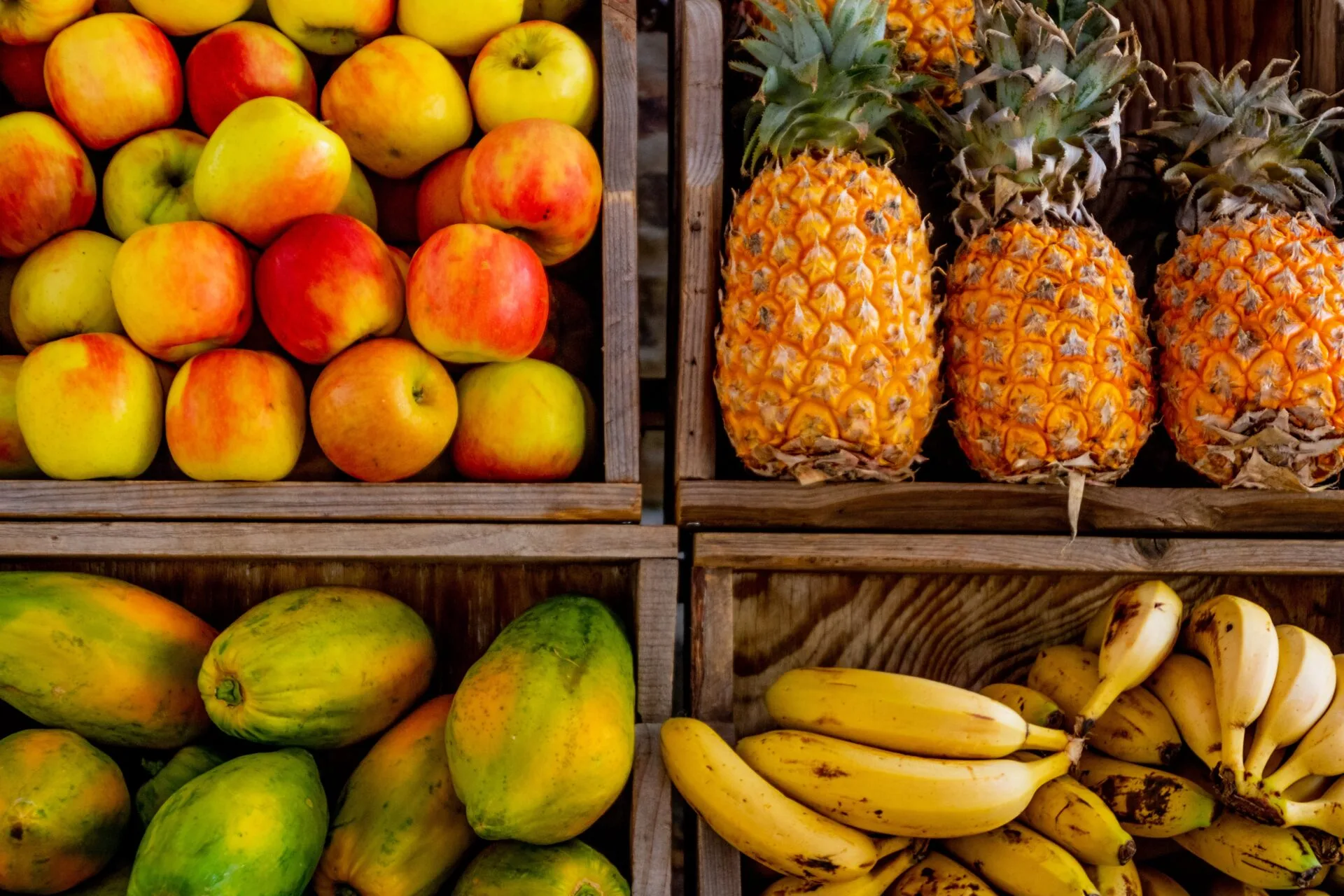Dehydrating pineapples is a great way of preserving the delicious and sweet fruit and extending its shelf life. It’s also a great way to enjoy the taste of summer in the cold winter months! The process of dehydrating pineapples is simple and straightforward, and you can have delicious dehydrated pineapple in just a few hours. In this article, we will discuss how to properly dehydrate pineapples, as well as provide some tips for the best results.To dehydrate pineapples, you will need the following items: a fresh pineapple, a sharp knife, a cutting board, paper towels, an oven or dehydrator, and parchment paper. Additionally, you may want to have a mixing bowl and measuring cup handy.
Preparing Pineapples for Dehydrating
Dehydrating pineapples is a great way to preserve the sweet flavor of fresh pineapple for longer. Before you can dehydrate them, however, it’s important to prepare your pineapples correctly. Doing so will ensure that they turn out delicious and that your dehydrated pineapple slices last as long as possible. Here are the steps to follow when preparing pineapples for dehydrating:
First, you will need to cut the pineapple into slices. Use a sharp knife to cut off both ends of the pineapple before slicing it into 1/4-inch thick slices. Peel off any remaining skin or eyes from the slices before transferring them onto a cutting board or other flat surface.
Next, rinse each slice with cold water and pat dry with paper towels. This helps remove any dirt or debris that may be on the surface of the pineapple slices, as well as any excess moisture.
Once the pineapple slices are dry, place them on a baking sheet lined with parchment paper. Bake in an oven preheated to 375 degrees Fahrenheit for 10 minutes to help soften up and get rid of any excess moisture that may still be present in the fruit.
Finally, transfer the baked pineapple slices onto a dehydrator tray and set your dehydrator temperature to 135 degrees Fahrenheit. Allow the pineapple slices to dry for 8-10 hours until they are completely dried out and leathery in texture. Once finished, store in an airtight container or vacuum seal bag for maximum shelf life.
Choosing the Right Temperature for Dehydrating
When it comes to dehydrating, temperature is an important factor to consider. The right temperature helps to retain the nutritional value of the food and ensure that it does not spoil. With the right temperature, you can also prevent shrinkage, spoilage, and color loss. It is important to know what temperature range should be used for different types of foods in order to get the best results when dehydrating.
When choosing a temperature for dehydrating, it is important to consider the type of food you are drying. Fruits and vegetables typically require temperatures between 95-115°F (35-46°C), while meats and fish require temperatures between 130-145°F (54-63°C). For nuts and grains, a lower temperature range of 90-100°F (32-38°C) works best.
It is also important to make sure that you are using a consistent temperature throughout the dehydration process. This will ensure that all parts of your food are dried evenly and thoroughly. If the temperature fluctuates too much during dehydration, it can lead to uneven drying and poor quality results. Additionally, if the temperature is too high or too low, it can lead to spoilage or discoloration of your food.
Finally, keep in mind that different types of foods require different levels of moisture in order for them to be properly dehydrated. If you are dehydrating fruits or vegetables with higher moisture content, you may need to increase your drying time or use a higher temperature in order to get the desired results. On the other hand, if you are dealing with nuts or grains with lower moisture content, then you may need lower temperatures and shorter drying times.
Choosing the right temperature for dehydrating is an important step in getting great results with your dried foods. Keeping these tips in mind will help ensure that your food retains its nutritional value and remains safe from spoilage or discoloration during dehydration.
Setting Up Your Dehydrator for Dehydrating
Dehydrating food is a great way to preserve it and ensure it will last for longer periods of time. Setting up your dehydrator properly is essential to get the best results. Here are some tips to help you get started.
First, you need to choose the right size of dehydrator for your needs. The larger units are great for larger batches, but may be too bulky for smaller batches. Consider how much food you plan on dehydrating and choose an appropriate size.
Next, you’ll want to make sure that your dehydrator is set up properly. Make sure all the shelves and trays are level, so the heat can evenly distribute throughout the unit. You’ll also want to make sure that there’s enough space between each tray so that air can circulate properly and evenly dry out the food.
Once your unit is set up, it’s time to choose the right temperature setting for your food. Different types of food require different temperatures; fruits should be dried at a higher temperature than vegetables, and meats should be dried at an even higher temperature than fruits or vegetables. Be sure to read the instructions on your dehydrator before selecting a temperature setting.
Finally, you’ll need to decide how long it will take to dry out each type of food in your dehydrator. Different foods have different drying times, so pay attention to this when setting up the timer for your unit. Again, read the instructions carefully so that you don’t end up with under- or over-dried food!
With these tips in mind, you’re ready to start dehydration with confidence! Enjoy experimenting with new recipes and discovering new flavors!
Dehydrating Pineapples
Dehydrating pineapples is a great way to preserve the fruit for a longer period of time. The process reduces the water content in the pineapple, making it shelf-stable and easy to transport. It also locks in flavor and nutrients, so you can enjoy the full taste and health benefits of the fruit. But how long does it take to dehydrate pineapples?
The answer depends on several factors, including the type of dehydrator you’re using, the temperature you’re setting it to, and the thickness of each piece of pineapple. Generally speaking, it takes between 6-12 hours to dehydrate a batch of fresh pineapple. If you’re using a food dehydrator with adjustable temperature settings, you can shorten this time by increasing the heat. However, doing so may result in a less flavorful product.
To ensure that your pineapples are fully dried and ready for storage or consumption, be sure to check them periodically throughout the drying process. Most dehydrators have an internal indicator light that will let you know when your pineapples are ready. If they still feel damp or soft when pressed gently with your fingers, they’ll need additional time in the dehydrator before they are completely dry and ready for use.
Overall, dehydrating pineapples is an easy way to preserve their flavor and nutrition without taking up too much space in your cupboard or refrigerator. The exact amount of time needed will depend on your particular setup and preferences but it usually takes between 6-12 hours for fresh pineapple slices to reach their optimal level of dehydration.

The Benefits of Eating Dehydrated Pineapple
Pineapples are a delicious fruit that offer many health benefits when eaten fresh or in their dehydrated form. Dehydrated pineapple is a convenient and tasty way to enjoy the nutritional value of this tropical fruit. Eating dehydrated pineapple can provide your body with important vitamins, minerals, and fiber that can help keep you healthy. Here are some of the benefits of eating dehydrated pineapple.
One of the most important benefits of eating dehydrated pineapple is that it is an excellent source of Vitamin C. Vitamin C helps support your immune system and helps your body absorb iron from other foods. It also helps protect your cells from damage caused by free radicals. Additionally, Vitamin C is important for collagen production, which helps keep your skin looking healthy and youthful.
Dehydrated pineapple also provides a good source of dietary fiber, which helps to regulate digestion and keep your digestive system running smoothly. Fiber can also help to reduce cholesterol levels and lower your risk for certain types of cancer, such as colon cancer. In addition, dietary fiber helps you feel fuller longer so it can be beneficial for weight loss or maintenance.
Eating dehydrated pineapple is also beneficial because it provides essential minerals like manganese and potassium. Manganese is important for healthy bones, connective tissues, and blood sugar regulation. Potassium is essential for muscle contraction and maintaining normal blood pressure levels. Both minerals have been linked to reducing the risk for certain types of heart disease.
Overall, eating dehydrated pineapple can provide many health benefits and should be enjoyed as part of a balanced diet. It’s an easy way to get more vitamins, minerals, and dietary fiber into your daily routine without having to buy fresh pineapples all the time. Enjoying this delicious treat on its own or as part of a recipe is a great way to reap the nutritional benefits that come with eating dehydrated pineapple!
Storing Your Pineapple
When storing your pineapple, it is important to keep it in a cool and dry place. Avoid storing it in direct sunlight or near a heat source as this can cause the pineapple to spoil quickly. You should also avoid storing the pineapple in the refrigerator as it can cause the texture of the fruit to become soft and mushy. It is best to store the pineapple at room temperature in a bowl or basket with some space between each piece. This will help keep the air circulating around the fruit, which can help preserve its freshness.
Re-Hydrating Your Pineapple
If you find that your pineapple has become dried out, you can re-hydrate it by soaking it in cold water for 15-20 minutes. Make sure to use filtered or distilled water if possible, as this will ensure that no minerals or chemicals are leeched into the fruit during re-hydration. After soaking, pat dry with a paper towel and store as normal. This process can help restore some of the lost moisture and make your pineapple taste fresher than before!
Tips for Storing and Re-Hydrating Your Pineapple
To get the most out of your pineapple, make sure to store it properly and re-hydrate when necessary. Doing so will help keep your pineapple fresher for longer and ensure that you get all of its health benefits without sacrificing on taste!
What to Do With Your Dried Pineapple?
Dried pineapple is a delicious snack that can be enjoyed any time of the day. It’s packed with nutrients, making it a great addition to any diet. But if you’re looking for something more than just snacking on it, there are plenty of creative ways to use dried pineapple. Here are some ideas for what to do with your dried pineapple:
Add it to Trail Mix
Dried pineapple makes a great addition to trail mix because of its sweet flavor and chewy texture. Start with your favorite base of nuts, seeds, and grains and add in some dried pineapple for a tropical twist. You can also add in some dark chocolate chips or coconut flakes for extra flavor and texture.
Make Fruit Salsa
Fruit salsa is a refreshing way to enjoy fruits like mangoes and pineapples without having to peel them or cut them up. Simply mix together chopped mangoes, diced red onion, chopped cilantro, lime juice, and some diced dried pineapple for a sweet-and-savory salsa you can enjoy with chips or tacos.
Bake into Breads & Muffins
Dried pineapple adds sweetness and texture to breads and muffins. Whether it’s banana bread or blueberry muffins, adding some diced dried pineapple will give them an extra boost of flavor and moisture. You can also try adding it into quick breads like zucchini bread or pumpkin bread for a tropical-inspired twist on classic recipes.
Add it to Oatmeal & Cereal
For an extra dose of sweetness in your morning oatmeal or cereal, try adding in some diced dried pineapple. The natural sugar content will help bring out the flavors in the oatmeal while adding texture. You can also add in other fruits like bananas or apples for even more flavor variety.
Toss into Salads
Dried pineapple makes a great addition to salads because of its sweet taste and chewy texture. It pairs especially well with green salads that have other crunchy ingredients like nuts or seeds as well as creamy ingredients like avocado or cheese. The sweetness from the dried pineapple helps balance out the savory flavors from the other ingredients in the salad for a delicious meal that’s full of flavor and nutrition.

Conclusion
Dehydrating pineapples is a simple process that requires minimal ingredients and time. Although you may choose to use a dehydrator, you can also dehydrate pineapples in the oven or air-dry them. When dehydrating in the oven, be sure to set it at its lowest temperature and keep an eye on the pineapple slices. Air-drying is perhaps the easiest method of all, but takes longer to achieve desired results. Once your pineapples are completely dried out, store them in an airtight container away from light and humidity for best results. Enjoy your delicious, dried pineapple!
No matter which method of dehydration you choose, dehydrating pineapples is a great way to preserve their flavor for future use. You can add them to salads or other dishes like oatmeal or yogurt for an extra boost of sweetness and nutrition. Pineapple also makes an excellent snack when served alone or with other fruits and nuts. Enjoy your homemade dehydrated pineapple!



